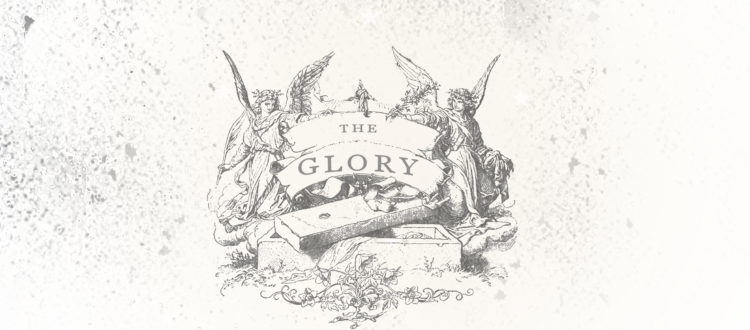The Resurrection and the Glory
There is almost no more exciting biblical-theological truth with which we can occupy our minds as we come to celebrate the resurrection of Jesus on Easter Sunday as that which we find in the Gospel of John about the Angels inside the empty tomb. What transpired on that first day of the week on which the Savior ushered in the new creation was nothing less than the fulfillment of the eternal plan of God for the redemption of His people. It is fitting then that we find echoes of the Old Covenant revelation of God to His people in the Gospel records about the resurrection of Jesus. One such account is that about Mary Magdalene’s encounter with the Angels at the garden tomb. John tells us that when Mary stooped to look into the tomb, “she saw two angels in white, sitting where the body of Jesus had lain, one at the head and one at the feet” (John 20:11-12).
Throughout the Old Covenant era, the Lord chose to dwell between the cherubim over the mercy seat on the ark of the Covenant. On the Day of Atonement, the High Priest would go into the Most Holy Place with the blood of the sacrifice for himself and for the people. He would carry the blood of the sacrifice to the mercy seat, where he would pour the blood–thereby symbolizing that the blood was covering the people’s transgressions of the Law of God (which was contained in the Ark) from before the presence of God (who came and dwelt in between the Angels). When God saw the blood, He came and dwelt over the mercy seat. This, of course, was an earthly picture of the heavenly glory. It was a symbolic pictorial for the people of God to understand something of the heavenly reality. It was also crying out for God to restore the glory that man lost when he sinned against God and forfeited the presence of God with him on earth. This was all prefiguring the restoration of the glory of God with man in the resurrection of Jesus Christ.
The Puritan, Richard Sibbes, in his sermon A Heavenly Conference Between Christ and Mary made the following redemptive-historical observation:
“[Jesus’] first appearance of all was made to Mary…She expressed her love of Christ by her desire of finding Him…As she wept, she stooped down and looked into the sepulchre, and there saw two Angels in white…They were one at the head, and the other at the feet. As in the law, when the mercy seat was made, two cherubim were also framed, and placed one at the one end, and the other at the other end thereof, with their faces looking toward one another, Exodus 25:20. And, when Christ was risen, there were two angels, one at the head, another at the feet, to show that peace was to be expected in the true propitiatory, Jesus Christ…Peace was made between heaven and earth.1
Geerhardus Vos also brought together the symbolism of the Ark of the Covenant and the Angels in the tomb when he wrote:
“What more convincing evidence of the truth of the resurrection could have been offered than the presence of these two angels, silently, reverently, majestically sitting where the body of Jesus had lain? Placed like the Cherubim on the mercy-seat, they covered between themselves the spot where the Lord had reposed and flooded it with celestial glory. It needed no voice of theirs to proclaim that here death had been swallowed up in victory. Ever since the angels descended into this tomb the symbolism of burial has been radically changed.2
When we come to understand that in His resurrection from the dead, Jesus reestablishes the glory of God for mankind. Jesus is the glory of God. He sheds His own blood for the forgiveness of the sins of His people and He carries His people into a world of grace and glory. The outshining of the glory of God is seen nowhere so much as it is seen in the face of the risen and reigning Son of God. The Angels are witnesses to this glory, ever longing to look into the work of redemption accomplished by the Lord of Hosts Himself.
1. Richard Sibbes The Complete Work of Richard Sibbes vol. 6 (Edinburgh: James Nichol, 1863) p. 419
2 Geerhardus Vos Grace and Glory (The Reformed Press, 1922) p. 96




Pingback : The Resurrection and the Glory - TheDyingSeed.com
Note that on the third day of creation, the dry land emerged from the waters. A baptism is typically represented by going under the water (representing death) and coming back upwards (representing resurrection). This is symbolic of a re-creation, or, New Creation.
This “motif” also seems to be present in Israel’s original Exodus, when Israel went through the water and walked on dry land to leave Egypt. As 1 Corinthians 10:2 notes, “they were all baptized unto Moses in the cloud and sea”.
So, it seems possible that this “motif” of resurrection, illustrated by the dry land emerging from the sea, could have been the basis for the “third day” bodily resurrection of Jesus.
Joshua Barton
Very encouraging both the article and the comment. What a glorious Savior and glorious God who through types and shadows pointed to the death and Resurrection of our Lord, the New Covenant established.